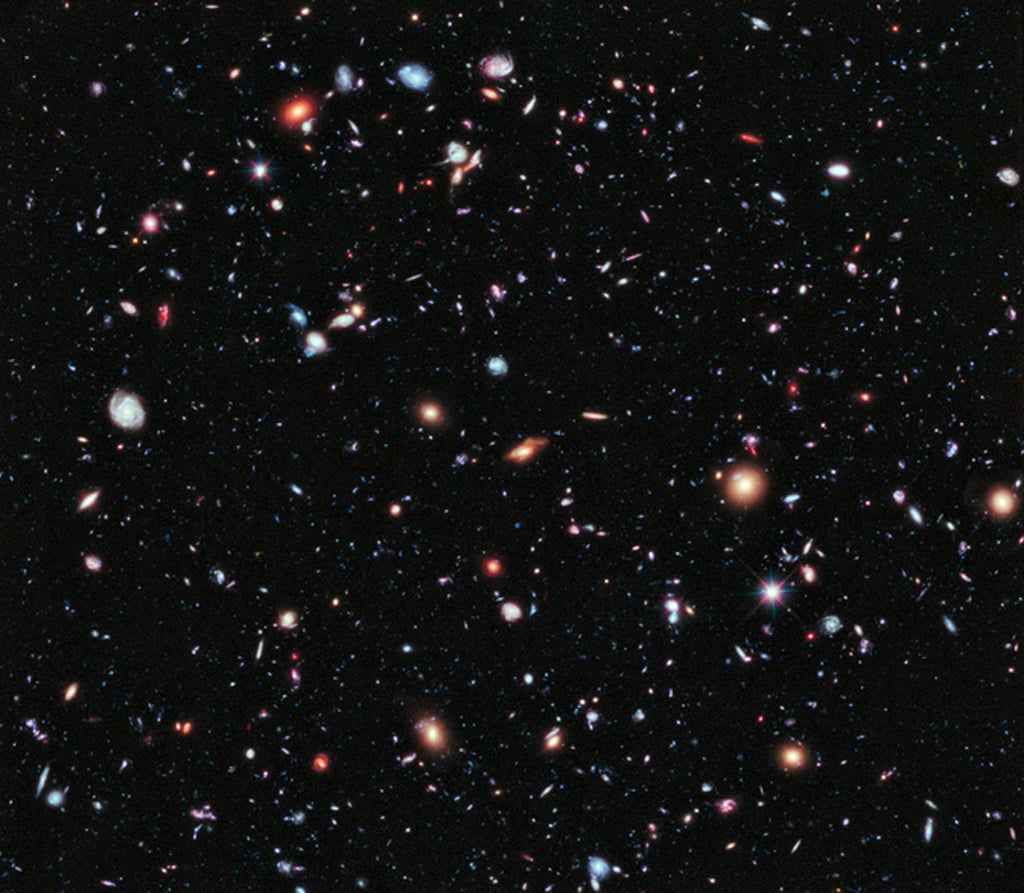From the day early in 1994 when its vision was restored after the first servicing mission, the Hubble Space Telescope has astonished and delighted the world with its discoveries. As each new instrument was installed in the dramatic shuttle servicing missions, Hubble blossomed and showed that its reach was again unparalleled.
Discovering galaxies at the earliest times has been one of the great achievements of Hubble’s time-machine-like ability to explore the early universe. This trek started with the Hubble Deep Field in 1995, shot with the Wide-Field and Planetary Camera 2, and continued with the Hubble Ultra Deep Field (HUDF) in 2003 using the new Advanced Camera for Surveys. Hubble’s new infrared camera (Wide Field Camera 3) was installed in the final servicing mission in 2009, and with HUDF09 and HUDF12, it extended Hubble’s vision back to just a few hundred million years after the first stars and galaxies formed. A decade of observations of the HUDF were assembled in 2012 into the eXtreme Deep Field (XDF), making the deepest image ever from Hubble. Together with GOODS and CANDELS and many other less deep but wider-area imaging programs, the Hubble XDF has allowed us to explore back to when the universe was remarkably young — back to a time just a few hundred million years after the first stars and galaxies formed during the cosmic dawn when the universe itself was reionized.
Hubble’s remarkable images of the earliest galaxies have been awe-inspiring and have heralded a remarkable scientific advance by letting us all see galaxies back when the universe was but 4 percent of its current age. Looking back through 96 percent of time to the young universe was far beyond what we could have imagined when the space telescope was launched in 1990, but Hubble did it!
Garth Illingworth, a professor of astronomy at the University of California, Santa Cruz, was the deputy principal investigator of the Advanced Camera for Surveys and the principal investigator of both the HUDF09 and XDF programs.










